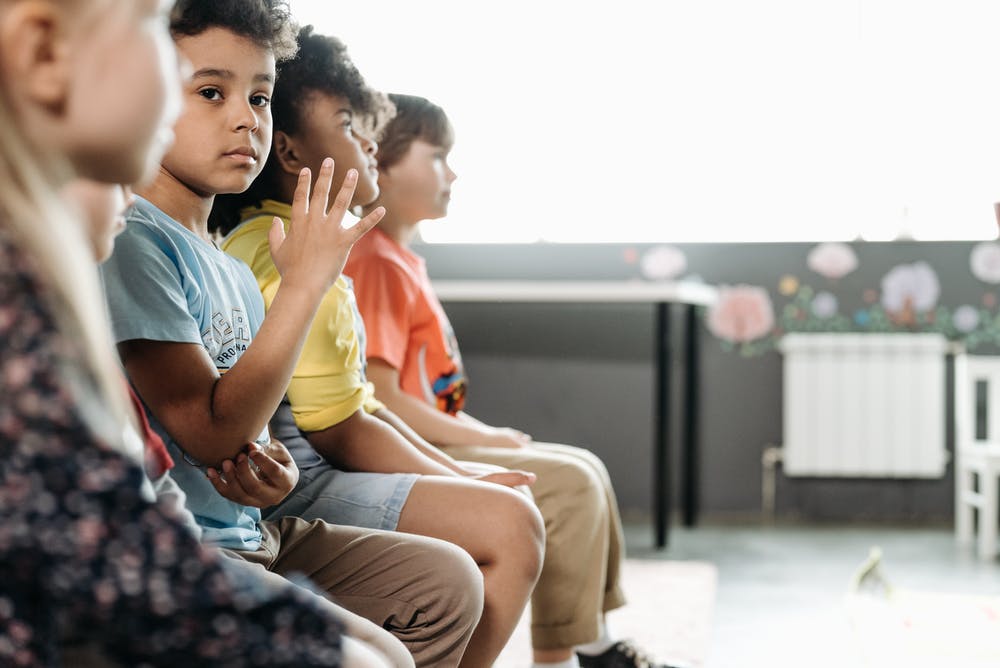Preschool Classroom Management: Tips for Success!

Mastering Preschool Classroom Management: Tips for Success!
Effective #classroom management in a #preschool setting is crucial for creating a positive and productive learning environment. Young children are still developing social, emotional, and cognitive skills, and they require consistent guidance to foster their #growth. As an #early-childhood- #educator, implementing strong classroom management strategies helps maintain order, promote learning, and #nurture positive relationships with your #students. Here are some valuable tips to keep your preschool classroom running smoothly.
Set Clear Expectations from the Start
Preschool children may be unfamiliar with structured environments, so it's important to set clear, simple rules. Use positive #language, like "We use our words to #express feelings" instead of saying "No yelling." Reinforce these expectations regularly, and be consistent in how you respond to behavior.
Create a Structured Routine
Young children thrive on routine. When they know what to expect each day, they feel secure and are better able to focus on learning. Establish a daily schedule that includes time for group activities, individual learning, snack time, and #outdoor- #play. Visual schedules can be especially helpful, as they provide a visual reminder of what’s coming next.
Foster Positive Relationships
Building strong relationships with your students creates a #classroom-environment where children feel #safe and respected. Take time to get to know each child’s unique needs, interests, and emotional state. Encourage kindness, #empathy, and cooperation, and model these behaviors through your actions and words.
Incorporate Engaging Activities
Engaging activities keep children actively involved in learning and prevent disruptive behavior. Hands-on learning experiences like #sensory-play, arts and #crafts, or interactive storytelling are perfect for capturing the attention of #preschoolers. You can find more ideas on designing meaningful literacy activities by reading our article Designing Activities to Support Literacy Development in the Early Childhood Classroom.
Use Positive Reinforcement
Acknowledge and praise appropriate behaviors to reinforce them. Offering positive reinforcement, such as verbal praise or small rewards, motivates children to follow the rules and participate in #classroom-activities. Focus on specific behaviors (e.g., "I love how you shared that toy with your friend!") to ensure children understand what behavior is being praised.
Collaborate with Children
An often-overlooked aspect of classroom management is collaboration with your students. Encourage them to be part of the process by helping set rules and establishing routines. This collaborative approach helps children take ownership of their behavior and builds their social skills.
For a deeper understanding of how collaboration in the classroom can improve your classroom management, consider taking the Classroom Management is Collaboration course. This course provides a deeper dive into how teamwork between #educators and students can create an environment of respect and growth.
Incorporate Movement Breaks
Preschoolers have a lot of energy, and they need regular movement breaks to stay focused. Activities like dancing, stretching, or short outdoor play sessions can help children release pent-up energy and refocus on the next task.
Use Visual Cues
Young children respond well to visual cues. Incorporate visual elements like charts, pictures, and labels to help reinforce classroom rules, routines, and expectations. Visual cues are especially helpful for children with varying levels of #language- #development, ensuring they understand the structure of the day.
Be Flexible and Patient
Children may have days when they feel out of sorts, and behavior can sometimes become unpredictable. Flexibility and patience are key. By staying calm and adapting to the needs of your students, you create a supportive atmosphere where children feel safe to express themselves and learn at their own pace.
Collaborate with Colleagues and Families
Classroom management doesn’t happen in isolation. Work with your colleagues to share ideas and strategies for creating a positive classroom environment. Additionally, maintaining open communication with families ensures that everyone is on the same page regarding the child’s needs and progress.
By implementing these tips, you’ll create an environment that encourages learning, fosters social development, and promotes positive behavior in your preschool classroom. For more tips on improving your classroom environment, don’t forget to follow us on TikTok for fun, creative strategies to use in your classroom.
If you're ready to dive deeper into improving your classroom management, be sure to explore the Classroom Management is Collaboration course. And for more insights on #early-childhood-education, check out our article Designing Activities to Support Literacy Development in the Early Childhood Classroom.
Happy teaching!
- Preschool Classroom Management: Tips for Success!
- Spark Their Love for Learning: Tips for Exciting Young Minds in the Classroom!
- Classroom Pets in the Early Childhood Education Classroom
- Supporting Children with Special Needs in the Early Childhood Education Classroom
- Managing an Effective Program Operation in Childcare
- How Earning the CDA Credential Helps Educators Set Up Appropriate Classroom Environments
- Using Positive Discipline in the Early Childhood Education Classroom
- CDA Credentialing 101: What It Means for Your Classroom and Career
- Active Supervision in the Early Childhood Education Classroom
- Beyond the Basics: Insider Tips for Earning Your CDA Credential
- Earning your CDA Helps Bring Inclusion to the Classroom
- STEAM Learning in the Early Childhood Education Classroom
- How the CDA Helps Preschools Succeed
- Tips for Completing the 120 Hours of CDA Credential Training
- Maintaining Your CDA Credential: Renewal Requirements and Tips
- Social-Emotional Learning in Early Childhood: Preparing CDA Professionals for Success
- Empowering Preschool Teachers: The Benefits of Earning Your CDA
- Top Tips for Earning Your CDA: A Roadmap for New Early Childhood Educators
- CDA Insights: Inside The Classroom
- Using the CDA Credential to Master Behavior Management in Early Childhood Education